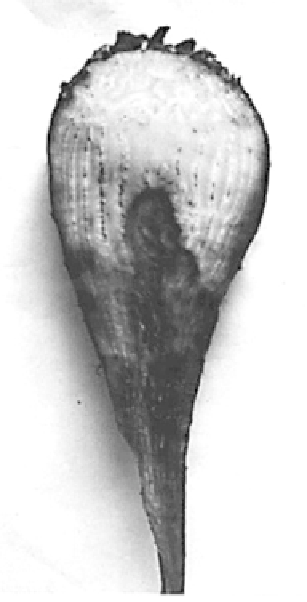Agriculture Reference
In-Depth Information
It was noted that under the abnormal weather conditions in the United States, a
new rare disease of sugar beet such as crinkle has appeared [13].
On the irrigation soils of Western Europe and Middle East, dry sclerotium (
Scle-
rotium bataticola
Taub) manifests intensively causing negative profi t in production,
whereas it seldom appears in Northern Europe.
Until recently, dry sclerotium did not infl uence agriculture. Lately, however, grow-
ing highly productive hybrids under deteriorating soil and climatic conditions lead to
increase in this disease cases [14-16]. The most affected are weak, damaged, or in a
stress-state plants.
In South Spain and Northern Africa, a rather uncommon disease caused by fungi
Urophlyctіs leproіdes
revealed on the sugar beet. The disease damages both leaves and
roots, creating galls fi lled with mycelium [17].
Aphanomyces
root rot (Figure 20.3) was fi rst described on the beet crops in the
United States, Canada, later on in Germany, Hungary, and France. It was detected on
mother and factory root crops in farms of Kirovograd, Kyiv, Cherkassy, and Chernihiv
areas in Ukraine, damaging 7-20 percent of roots [18-20].
FIGURE 20.3
Reveal of
Aphanomyces
root rot on sugar beet.
















Search WWH ::

Custom Search